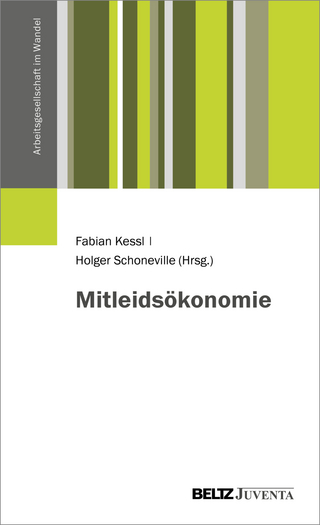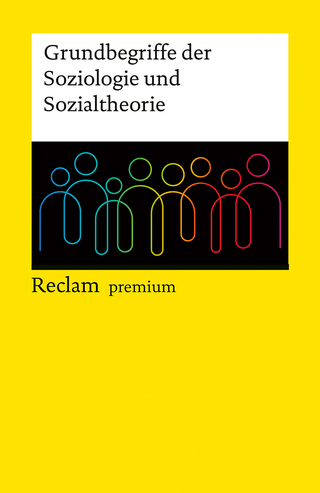
Statistical Reasoning in the Behavioral Sciences
John Wiley & Sons Inc (Verlag)
978-1-119-37973-7 (ISBN)
- Titel z.Zt. nicht lieferbar
- Versandkostenfrei innerhalb Deutschlands
- Auch auf Rechnung
- Verfügbarkeit in der Filiale vor Ort prüfen
- Artikel merken
This revised and updated edition continues to follow the recommendations of the APA Task Force on Statistical Inference and greatly expands the information on testing hypotheses about single means. The Seventh Edition moves from a focus on the use of computers in statistics to a more precise look at statistical software. The “Point of Controversy” feature embedded throughout the text provides current discussions of exciting and hotly debated topics in the field. Readers will appreciate how the comprehensive graphs, tables, cartoons and photographs lend vibrancy to all of the material covered in the text.
PREFACE vii
ABOUT THE BOOK AND AUTHORS x
1 INTRODUCTION 1
1.1 Descriptive Statistics, 3
1.2 Inferential Statistics, 3
1.3 Our Concern: Applied Statistics, 4
1.4 Variables and Constants, 5
1.5 Scales of Measurement, 6
1.6 Scales of Measurement and Problems of Statistical Treatment, 8
1.7 Do Statistics Lie?, 9
Point of Controversy: Are Statistical Procedures Necessary?, 11
1.8 Some Tips on Studying Statistics, 12
1.9 Statistics and Computers, 12
1.10 Summary, 13
2 FREQUENCY DISTRIBUTIONS, PERCENTILES, AND PERCENTILE RANKS 16
2.1 Organizing Qualitative Data, 16
2.2 Grouped Scores, 18
2.3 How to Construct a Grouped Frequency Distribution, 19
2.4 Apparent versus Real Limits, 21
2.5 The Relative Frequency Distribution, 21
2.6 The Cumulative Frequency Distribution, 22
2.7 Percentiles and Percentile Ranks, 24
2.8 Computing Percentiles from Grouped Data, 25
2.9 Computation of Percentile Rank, 28
2.10 Summary, 28
3 GRAPHIC REPRESENTATION OF FREQUENCY DISTRIBUTIONS 32
3.1 Basic Procedures, 32
3.2 The Histogram, 33
3.3 The Frequency Polygon, 34
3.4 Choosing between a Histogram and a Polygon, 35
3.5 The Bar Diagram and the Pie Chart, 37
3.6 The Cumulative Percentage Curve, 39
3.7 Factors Affecting the Shape of Graphs, 40
3.8 Shape of Frequency Distributions, 42
3.9 Summary, 43
4 CENTRAL TENDENCY 46
4.1 The Mode, 46
4.2 The Median, 47
4.3 The Mean, 48
4.4 Properties of the Mode, 49
4.5 Properties of the Mean, 50
Point of Controversy: Is It Permissible to Calculate the Mean for Tests in the Behavioral Sciences?, 51
4.6 Properties of the Median, 52
4.7 Measures of Central Tendency in Symmetrical and Asymmetrical Distributions, 53
4.8 The Effects of Score Transformations, 54
4.9 Summary, 55
5 VARIABILITY AND STANDARD (z) SCORES 58
5.1 The Range and Semi-Interquartile Range, 58
5.2 Deviation Scores, 60
5.3 Deviational Measures: The Variance, 61
5.4 Deviational Measures: The Standard Deviation, 62
5.5 Calculation of the Variance and Standard Deviation: Raw-Score Method, 63
5.6 Calculation of the Standard Deviation with SPSS, 64
Point of Controversy: Calculating the Sample Variance: Should We Divide by n or (n − 1)?, 67
5.7 Properties of the Range and Semi-Interquartile Range, 68
5.8 Properties of the Standard Deviation, 68
5.9 How Big Is a Standard Deviation?, 69
5.10 Score Transformations and Measures of Variability, 69
5.11 Standard Scores (z Scores), 70
5.12 A Comparison of z Scores and Percentile Ranks, 73
5.13 Summary, 74
6 STANDARD SCORES AND THE NORMAL CURVE 78
6.1 Historical Aspects of the Normal Curve, 78
6.2 The Nature of the Normal Curve, 81
6.3 Standard Scores and the Normal Curve, 81
6.4 The Standard Normal Curve: Finding Areas When the Score Is Known, 83
6.5 The Standard Normal Curve: Finding Scores When the Area Is Known, 86
6.6 The Normal Curve as a Model for Real Variables, 88
6.7 The Normal Curve as a Model for Sampling Distributions, 88
Point of Controversy: How Normal Is the Normal Curve?, 89
6.8 Summary, 89
7 CORRELATION 92
7.1 Some History, 93
7.2 Graphing Bivariate Distributions: The Scatter Diagram, 95
7.3 Correlation: A Matter of Direction, 96
7.4 Correlation: A Matter of Degree, 98
7.5 Understanding the Meaning of Degree of Correlation, 99
7.6 Formulas for Pearson’s Coefficient of Correlation, 100
7.7 Calculating r from Raw Scores, 101
7.8 Calculating r with SPSS, 103
7.9 Spearman’s Rank-Order Correlation Coefficient, 106
7.10 Correlation Does Not Prove Causation, 107
7.11 The Effects of Score Transformations, 110
7.12 Cautions Concerning Correlation Coefficients, 110
7.13 Summary, 114
8 PREDICTION 118
8.1 The Problem of Prediction, 118
8.2 The Criterion of Best Fit, 120
Point of Controversy: Least-Squares Regression versus the Resistant Line, 121
8.3 The Regression Equation: Standard-Score Form, 122
8.4 The Regression Equation: Raw-Score Form, 123
8.5 Error of Prediction: The Standard Error of Estimate, 125
8.6 An Alternative (and Preferred) Formula for SYX, 127
8.7 Calculating the “Raw-Score” Regression Equation and Standard Error of Estimate with SPSS, 128
8.8 Error in Estimating Y from X, 130
8.9 Cautions Concerning Estimation of Predictive Error, 132
8.10 Prediction Does Not Prove Causation, 133
8.11 Summary, 133
9 INTERPRETIVE ASPECTS OF CORRELATION AND REGRESSION 136
9.1 Factors Influencing r: Degree of Variability in Each Variable, 136
9.2 Interpretation of r: The Regression Equation I, 137
9.3 Interpretation of r: The Regression Equation II, 139
9.4 Interpretation of r : Proportion of Variation in Y Not Associated with Variation in X, 140
9.5 Interpretation of r: Proportion of Variance in Y Associated with Variation in X, 142
9.6 Interpretation of r: Proportion of Correct Placements, 144
9.7 Summary, 145
10 PROBABILITY 147
10.1 Defining Probability, 148
10.2 A Mathematical Model of Probability, 149
10.3 Two Theorems in Probability, 150
10.4 An Example of a Probability Distribution: The Binomial, 151
10.5 Applying the Binomial, 153
10.6 Probability and Odds, 155
10.7 Are Amazing Coincidences Really That Amazing?, 155
10.8 Summary, 156
11 RANDOM SAMPLING AND SAMPLING DISTRIBUTIONS 160
11.1 Random Sampling, 161
11.2 Using a Table of Random Numbers, 163
11.3 The Random Sampling Distribution of the Mean: An Introduction, 164
11.4 Characteristics of the Random Sampling Distribution of the Mean, 166
11.5 Using the Sampling Distribution of X to Determine the Probability for Different Ranges of Values of X, 168
11.6 Random Sampling without Replacement, 173
11.7 Summary, 173
12 INTRODUCTION TO STATISTICAL INFERENCE: TESTING HYPOTHESES ABOUT A SINGLE MEAN (z) 175
12.1 Testing a Hypothesis about a Single Mean, 176
12.2 The Null and Alternative Hypotheses, 176
12.3 When Do We Retain and When Do We Reject the Null Hypothesis?, 178
12.4 Review of the Procedure for Hypothesis Testing, 178
12.5 Dr. Brown’s Problem: Conclusion, 178
12.6 The Statistical Decision, 180
12.7 Choice of HA: One-Tailed and Two-Tailed Tests, 182
12.8 Review of Assumptions in Testing Hypotheses about a Single Mean, 183
Point of Controversy: The Single-Subject Research Design, 184
12.9 Summary, 185
13 TESTING HYPOTHESES ABOUT A SINGLE MEAN WHEN 𝜎 IS UNKNOWN (t) 187
13.1 Estimating the Standard Error of the Mean When 𝜎 Is Unknown, 187
13.2 The t Distribution, 189
13.3 Characteristics of Student’s Distribution of t, 191
13.4 Degrees of Freedom and Student’s Distribution of t, 192
13.5 An Example: Has the Violent Content of Television Programs Increased?, 193
13.6 Calculating t from Raw Scores, 196
13.7 Calculating t with SPSS, 198
13.8 Levels of Significance versus p-Values, 200
13.9 Summary, 202
14 INTERPRETING THE RESULTS OF HYPOTHESIS TESTING: EFFECT SIZE, TYPE I AND TYPE II ERRORS, AND POWER 205
14.1 A Statistically Significant Difference versus a Practically Important Difference, 205
Point of Controversy: The Failure to Publish “Nonsignificant” Results, 206
14.2 Effect Size, 207
14.3 Errors in Hypothesis Testing, 210
14.4 The Power of a Test, 212
14.5 Factors Affecting Power: Difference between the True Population Mean and the Hypothesized Mean (Size of Effect), 212
14.6 Factors Affecting Power: Sample Size, 213
14.7 Factors Affecting Power: Variability of the Measure, 214
14.8 Factors Affecting Power: Level of Significance (𝛼), 214
14.9 Factors Affecting Power: One-Tailed versus Two-Tailed Tests, 214
14.10 Calculating the Power of a Test, 216
Point of Controversy: Meta-Analysis, 217
14.11 Estimating Power and Sample Size for Tests of Hypotheses about Means, 218
14.12 Problems in Selecting a Random Sample and in Drawing Conclusions, 220
14.13 Summary, 221
15 TESTING HYPOTHESES ABOUT THE DIFFERENCE BETWEEN TWO INDEPENDENT GROUPS 224
15.1 The Null and Alternative Hypotheses, 224
15.2 The Random Sampling Distribution of the Difference between Two Sample Means, 225
15.3 Properties of the Sampling Distribution of the Difference between Means, 228
15.4 Determining a Formula for t, 228
15.5 Testing the Hypothesis of No Difference between Two Independent Means: The Dyslexic Children Experiment, 231
15.6 Use of a One-Tailed Test, 234
15.7 Calculation of t with SPSS, 234
15.8 Sample Size in Inference about Two Means, 237
15.9 Effect Size, 237
15.10 Estimating Power and Sample Size for Tests of Hypotheses about the
Difference between Two Independent Means, 241
15.11 Assumptions Associated with Inference about the Difference between Two Independent Means, 242
15.12 The Random-Sampling Model versus the Random-Assignment Model, 243
15.13 Random Sampling and Random Assignment as Experimental Controls, 244
15.14 Summary, 245
16 TESTING FOR A DIFFERENCE BETWEEN TWO DEPENDENT (CORRELATED) GROUPS 249
16.1 Determining a Formula for t, 250
16.2 Degrees of Freedom for Tests of No Difference between Dependent Means, 251
16.3 An Alternative Approach to the Problem of Two Dependent Means, 251
16.4 Testing a Hypothesis about Two Dependent Means: Does Text Messaging Impair Driving?, 252
16.5 Calculating t with SPSS, 254
16.6 Effect Size, 257
16.7 Power, 258
16.8 Assumptions When Testing a Hypothesis about the Difference between Two Dependent Means, 259
16.9 Problems with Using the Dependent-Samples Design, 259
16.10 Summary, 261
17 INFERENCE ABOUT CORRELATION COEFFICIENTS 264
17.1 The Random Sampling Distribution of r, 264
17.2 Testing the Hypothesis That 𝜌 = 0, 265
17.3 Fisher’s z′ Transformation, 267
17.4 Strength of Relationship, 268
17.5 A Note about Assumptions, 268
17.6 Inference When Using Spearman’s rS, 269
17.7 Summary, 269
18 AN ALTERNATIVE TO HYPOTHESIS TESTING: CONFIDENCE INTERVALS 271
18.1 Examples of Estimation, 272
18.2 Confidence Intervals for 𝜇X, 273
18.3 The Relation between Confidence Intervals and Hypothesis Testing, 276
18.4 The Advantages of Confidence Intervals, 276
18.5 Random Sampling and Generalizing Results, 277
18.6 Evaluating a Confidence Interval, 278
Point of Controversy: Objectivity and Subjectivity in Inferential Statistics: Bayesian Statistics, 279
18.7 Confidence Intervals for 𝜇X − 𝜇Y , 280
18.8 Sample Size Required for Confidence Intervals of 𝜇X and 𝜇X − 𝜇Y , 283
18.9 Confidence Intervals for 𝜌, 285
18.10 Where Are We in Statistical Reform?, 286
18.11 Summary, 287
19 TESTING FOR DIFFERENCES AMONG THREE OR MORE GROUPS: ONE-WAY ANALYSIS OF VARIANCE (AND SOME ALTERNATIVES) 289
19.1 The Null Hypothesis, 291
19.2 The Basis of One-Way Analysis of Variance: Variation within and Between Groups, 291
19.3 Partition of the Sums of Squares, 293
19.4 Degrees of Freedom, 295
19.5 Variance Estimates and the F Ratio, 296
19.6 The Summary Table, 297
19.7 Example: Does Playing Violent Video Games Desensitize People to Real-Life Aggression?, 298
19.8 Comparison of t and F, 301
19.9 Raw-Score Formulas for Analysis of Variance, 302
19.10 Calculation of ANOVA for Independent Measures with SPSS, 303
19.11 Assumptions Associated with ANOVA, 306
19.12 Effect Size, 306
19.13 ANOVA and Power, 307
19.14 Post Hoc Comparisons, 308
19.15 Some Concerns about Post Hoc Comparisons, 310
19.16 An Alternative to the F Test: Planned Comparisons, 310
19.17 How to Construct Planned Comparisons, 311
19.18 Analysis of Variance for Repeated Measures, 314
19.19 Calculation of ANOVA for Repeated Measures with SPSS, 319
19.20 Summary, 321
20 FACTORIAL ANALYSIS OF VARIANCE: THE TWO-FACTOR DESIGN 326
20.1 Main Effects, 327
20.2 Interaction, 329
20.3 The Importance of Interaction, 331
20.4 Partition of the Sums of Squares for Two-Way ANOVA, 332
20.5 Degrees of Freedom, 336
20.6 Variance Estimates and F Tests, 337
20.7 Studying the Outcome of Two-Factor Analysis of Variance, 338
20.8 Effect Size, 340
20.9 Calculation of Two-Factor ANOVA with SPSS, 341
20.10 Planned Comparisons, 342
20.11 Assumptions of the Two-Factor Design and the Problem of Unequal Numbers of Scores, 343
20.12 Mixed Two-Factor Within-Subjects Design, 344
20.13 Calculation of the Mixed Two-Factor Within-Subjects Design with SPSS, 348
20.14 Summary, 349
21 CHI-SQUARE AND INFERENCE ABOUT FREQUENCIES 353
21.1 The Chi-Square Test for Goodness of Fit, 353
21.2 Chi-Square (𝜒2) as a Measure of the Difference between Observed and Expected Frequencies, 355
21.3 The Logic of the Chi-Square Test, 356
21.4 Interpretation of the Outcome of a Chi-Square Test, 358
21.5 Different Hypothesized Proportions in the Test for Goodness of Fit, 358
21.6 Effect Size for Goodness-of-Fit Problems, 359
21.7 Assumptions in the Use of the Theoretical Distribution of Chi-Square, 360
21.8 Chi-Square as a Test for Independence between Two Variables, 360
21.9 Finding Expected Frequencies in a Contingency Table, 362
21.10 Calculation of 𝜒2 and Determination of Significance in a Contingency Table, 363
21.11 Measures of Effect Size (Strength of Association) for Tests of Independence, 364
Point of Controversy: Yates’ Correction for Continuity, 365
21.12 Power and the Chi-Square Test of Independence, 367
21.13 Summary, 368
22 SOME (ALMOST) ASSUMPTION-FREE TESTS 371
22.1 The Null Hypothesis in Assumption-Freer Tests, 372
22.2 Randomization Tests, 372
22.3 Rank-Order Tests, 374
22.4 The Bootstrap Method of Statistical Inference, 375
22.5 An Assumption-Freer Alternative to the t Test of a Difference between Two Independent Groups: The Mann–Whitney U Test, 376
Point of Controversy: A Comparison of the t Test and the Mann–Whitney U Test with Real-World Distributions, 379
22.6 An Assumption-Freer Alternative to the t Test of a Difference Between Two Dependent Groups: The Sign Test, 380
22.7 Another Assumption-Freer Alternative to the t Test of a Difference Between Two Dependent Groups: The Wilcoxon Signed-Ranks Test, 382
22.8 An Assumption-Freer Alternative to the One-Way ANOVA for Independent Groups: The Kruskal–Wallis Test, 384
22.9 An Assumption-Freer Alternative to ANOVA for Repeated Measures: Friedman’s Rank Test for Correlated Samples, 387
22.10 Summary, 389
EPILOGUE 392
APPENDIX A REVIEW OF BASIC MATHEMATICS 396
APPENDIX B LIST OF SYMBOLS 405
APPENDIX C ANSWERS TO PROBLEMS 408
APPENDIX D STATISTICAL TABLES 424
Table A: Areas under the Normal Curve Corresponding to Given Values of z, 424
Table B: The Binomial Distribution, 429
Table C: Random Numbers, 432
Table D: Student’s t Distribution, 434
Table E: The F Distribution, 436
Table F: The Studentized Range Statistic, 440
Table G: Values of the Correlation Coefficient Required for Different Levels of Significance When H0∶ 𝜌 = 0, 441
Table H: Values of Fisher’s z′ for Values of r, 443
Table I: The 𝜒2 Distribution, 444
Table J: Critical One-Tail Values of ΣRX for the Mann–Whitney U Test, 445
Table K: Critical Values for the Smaller of R+ or R− for the Wilcoxon Signed-Ranks Test, 447
REFERENCES 448
INDEX 454
| Erscheinungsdatum | 10.11.2017 |
|---|---|
| Verlagsort | New York |
| Sprache | englisch |
| Maße | 201 x 252 mm |
| Gewicht | 839 g |
| Themenwelt | Geisteswissenschaften ► Psychologie |
| Sozialwissenschaften ► Soziologie ► Allgemeines / Lexika | |
| Sozialwissenschaften ► Soziologie ► Empirische Sozialforschung | |
| ISBN-10 | 1-119-37973-3 / 1119379733 |
| ISBN-13 | 978-1-119-37973-7 / 9781119379737 |
| Zustand | Neuware |
| Informationen gemäß Produktsicherheitsverordnung (GPSR) | |
| Haben Sie eine Frage zum Produkt? |
aus dem Bereich


